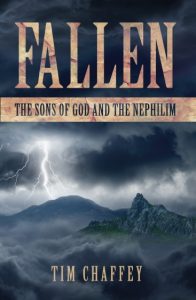
We won! Tilt Shift wins the ICVM gold crown award.
On February 21, the International Christian Visual Media Crown Awards were held during the National Religious Broadcasters convention in Nashville. The ICVM website states that the awards ceremony is about “Honoring the Best in Indie Christian Film.” I am very pleased to announce that Tilt Shift won first place, the gold crown, for best Christian talk show.
A little over three years ago, my wife and I had an idea to create a movie review show that analyzed the philosophies and worldviews being promoted through Hollywood films. I asked my friend and colleague, Bryan Osborne, to cohost the show with me. It would be another year before we came up with a name for the show and filmed our first season. Special thanks to the A/V crew at Answers in Genesis for suggesting the name of the show and for doing such an awesome job on the production side of things.
I can honestly say that I never imagined that the show would win an award like this because I didn’t even know the ICVM existed until someone told us in November that Tilt Shift had been nominated and was one of five finalists for best Christian talk show. I am grateful for the honor of winning this award, and even though the idea started in my house, it takes a great team of people to bring a show from concept to reality. So, I’d like to say a huge THANK YOU to everyone involved in working on the show from the producers to the directors, camera crew, audio techs, reviewers, and editors.

Answers.tv director Bryan Eckardt received Tilt Shift’s gold crown award. Fun fact: Bryan is also the somewhat snarky narrator of Tilt Shift’s introduction.
We have had so much fun filming the episodes, and probably a little too much fun filming the promos. While it’s time consuming to do all the preparation and post-production, I have been very pleased with the result and encouraged by so many people who have reached out with positive feedback about the show. I am particularly grateful for those who tell me that it has helped them grow in their faith.
We recently wrapped up filming season three and will be working through post-production for a few months. The episodes will likely start to drop in August or September. For more details about the concept and development of Tilt Shift, check out this post I wrote when our first episode aired on Answers.tv. If you haven’t watched the show yet, go to Answers.tv and sign up for a free seven-day trial to binge watch Tilt Shift and some of the other great programs on the platform. Then sign up for an entire year for just over $3 per month so you can continue watching. Two other Answers.tv programs were also finalists for awards this year (Lily’s Lab and Kashtan’s Wildlife in the Zoo).
Here is a list of the movies we’ve covered so far on Tilt Shift:
Season 1:
- Free Guy
- A Quiet Place
- Ghostbusters: Afterlife
- Beauty and the Beast (1991 vs. 2017)
- Woke Women vs. Strong Women
- The Last Jedi (my all-time most hated film)
- Jurassic Park Trilogy
- Avengers Endgame
Season 2:
- The Bad Guys
- Godzilla: King of Monsters
- Harry Potter series (two episodes)
- Top Gun Maverick
- Avatar
- Jurassic World Trilogy
- Spider-Man: No Way Home
Here’s one of the promos we shot for the Harry Potter episodes in season 2.
Season 3:
I’ll wait a little longer to announce the films we covered for the upcoming season, but I will say that one of them had a lot of pink in it and was last year’s highest grossing film.
Thanks for reading!

